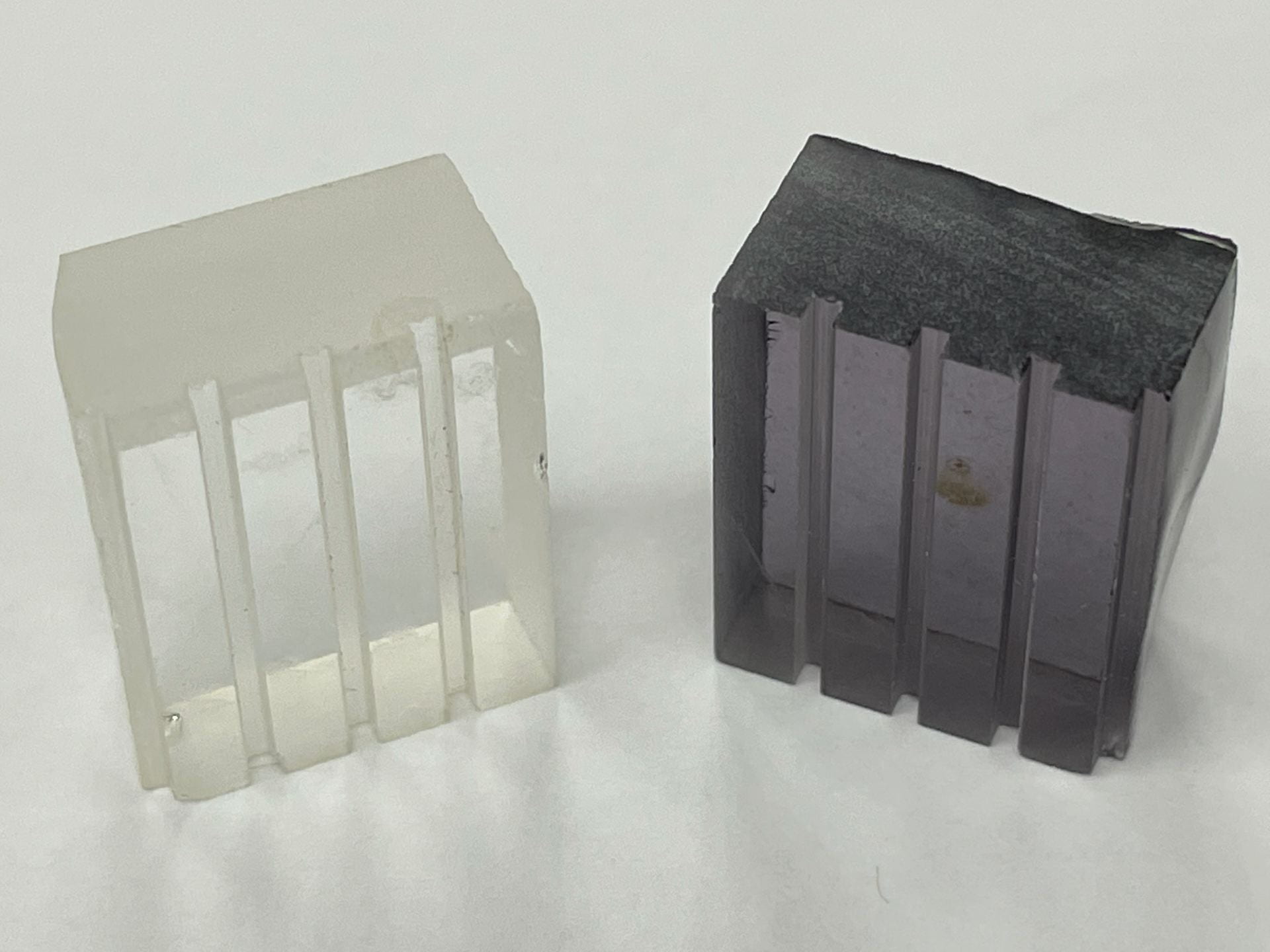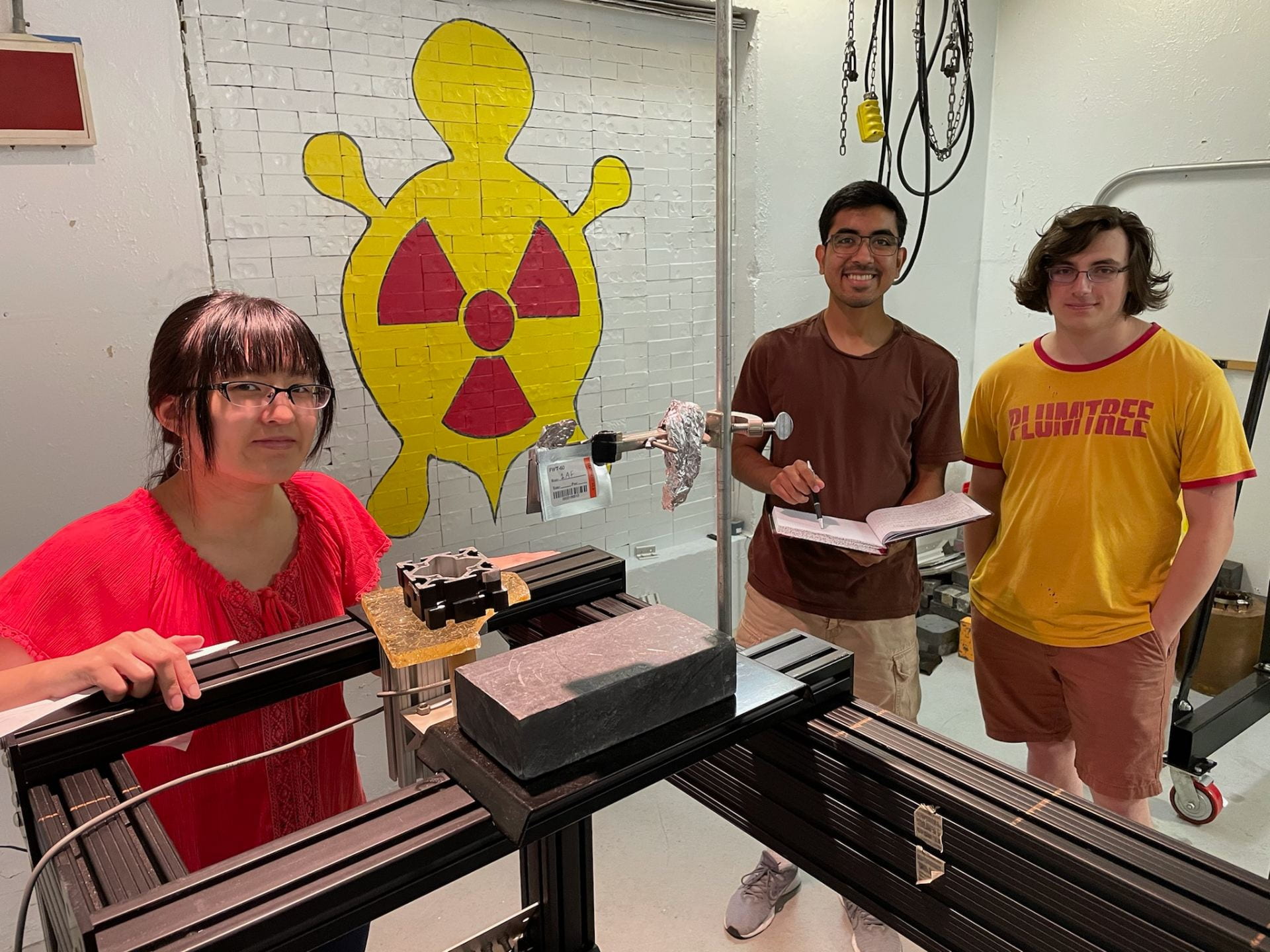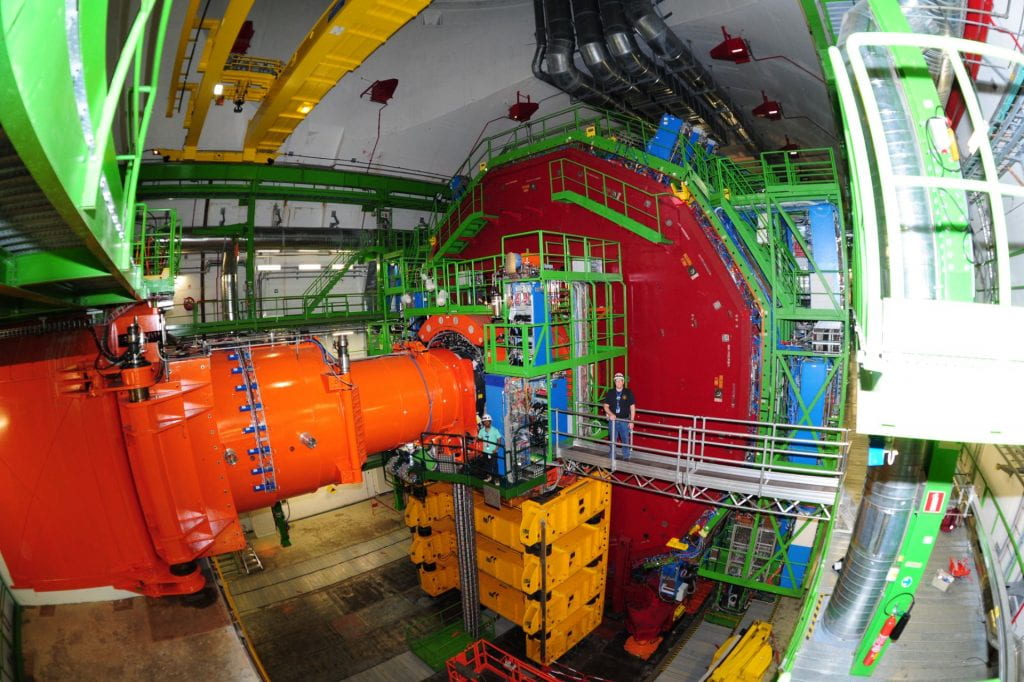CERN’s LHC CMS SRPD Detector. A goal of the Heavy Ion Community is to understand the properties of the universe within the first few microseconds after its birth – the Big Bang. In the first few microseconds, matter was in the form of a quark-gluon plasma, the time before hadrons (protons, neutrons) had formed. At the Large Hadron Collider at CERN, heavy ion collisions (Pb-Pb) within the CMS detector can occur in a variety of manners. They can be head on, peripheral, or somewhere in between. Each of these have an impact on the subsequent quark gluon plasma conditions that are formed. It is important to identify these characteristics of the collision. This is partially accomplished in the Zero Degree Calorimeter (ZDC) Spectator Reaction Plane Detector (SRPD). Neutrons and other neutrals from the collisions continue to travel straight from the interaction point with approximately the beam energy. Since they are neutral, they are unaffected by the subsequent LHC bending magnets. The so-called spectator neutrons from the collision carry with them information about the dynamics of the collision.

The SRPDs are comprised of an array of quartz blocks, and are located between the EM & hadronic sections of the ZDCs. Neutrons and other EM induced showers interact with the SRPD quartz elements and radiate due to Cherenkov radiation. The subsequent light is captured by wavelength shifting fibers and transported to photomultiplier tubes. The radiation environment is harsh, quickly impacting the performance of the detector by darkening the quartz blocks.
At UMD, Koeth and his team in collaboration with the UMD Radiation Facilities are characterizing the radiation damage of these devices so as to calibrate for signal loss, devise a method to reverse the discoloration, and implement a design for a new radiation hard detector.


